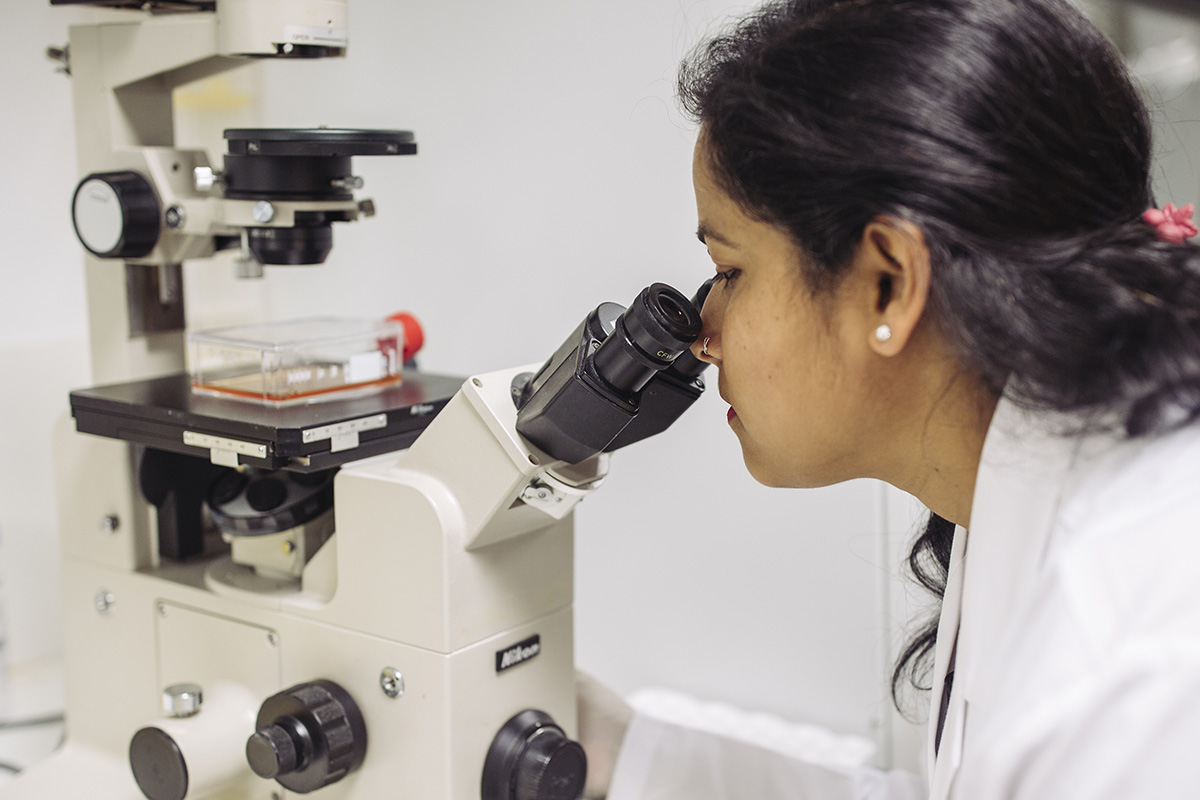This website uses cookies so that we can provide you with the best user experience possible. Cookie information is stored in your browser and performs functions such as recognising you when you return to our website and helping our team to understand which sections of the website you find most interesting and useful.
Research
Focus on the optic nerve
New research is developing a model to investigate how genetic faults cause vision loss in glaucoma and other optic nerve diseases.
Our vision relies on the correct functioning of the 1.2 million retinal ganglion cells that make up our optic nerve and transfer visual information from the eye to the brain.
In glaucoma, these cells are damaged – interrupting the transmission of information and leading to vision loss.
Current glaucoma therapies can effectively reduce eye pressure to slow vision loss, but they don’t work for everyone – and none revive retinal ganglion cells and restore sight.
“Studying retinal ganglion cells is key to further understanding of glaucoma and developing new treatments,” says Dr Sushma Anand, Research Fellow in CERA’s Mitochondria and Neurodegeneration Research Unit.
With support from the CASS Foundation, Dr Anand is researching the role faulty mitochondria – the tiny powerpacks that provide energy to our cells – play in retinal ganglion cell damage that occurs in glaucoma and other optic nerve diseases like in Leber Hereditary Optic Neuropathy (LHON).
“Understanding why mitochondria stop working is the first step to understanding how we keep them healthy,” says Dr Anand.

Cell models
Dr Anand says she has developed a new method to grow cells in the lab that closely resemble those lost in glaucoma and other diseases of the optic nerve.
Using a technique called ‘direct reprogramming’, Dr Anand introduces specific genes to transform cells from one type into another.
She takes human skin cells called fibroblasts and introduces various genes to encourage them to transform into nerve-like cells or neurons.
The relatively fast process takes between 15 and 21 days, so Dr Anand has already completed several tests and has validated and standardised her method.
“The insights gained from this project will open the door to further understanding of these diseases and eventually for testing treatments,” she says.
The next step is developing cell models that include the genetic mistakes known to cause glaucoma and other optic nerve diseases like LHON.
“If this cellular disease model is successful, we will test if repurposing FDA-approved drugs can block retinal ganglion cell death and potentially prevent or reverse vision loss,” says Dr Anand.
Dr Anand says she is grateful for the philanthropic support: “The CASS Foundation grant has enabled us to think of the bigger picture.”
This article first appeared in See the future: Annual Review 2022.

